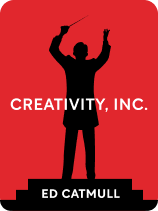

This article is an excerpt from the Shortform book guide to "Creativity, Inc." by Ed Catmull. Shortform has the world's best summaries and analyses of books you should be reading.
Like this article? Sign up for a free trial here .
What are the mental models used by the Pixar management teams? How do these models help them work with creative teams?
At Pixar, management models are the strategies used for balancing the different departments, deadlines, and budgetary constraints. The Pixar management teams have to support the creative mission without losing sight of the necessary details for a profitable company.
Keep reading for more about Pixar management models.
Mental Models for Pixar Management
Creative teams aren’t the only ones who can use mental models to their advantage. The Pixar management teams have the challenge of balancing different departments, deadlines, and budgetary constraints. Through visualization, they can develop a mental model that helps them balance a variety of factors.
Take a lesson from Pixar management: to help you maintain focus as a manager, develop a mental model that emphasizes the different areas you need to balance. As you form your scenario, consider the following factors:
- Define the ways each department relates to other departments. Each department and team has a different set of needs and requirements. In your mental model, be sure to clearly define these needs and the ways that they impact other areas of the process. For example, if you’re visualizing your job as a two-sided scale, you may relate the weights on either side of the scale to resources. Give one team too much weight, and the scale falls out of balance.
- Discover ways to interact with varying personalities. As a manager, you’ll have to interact with different types of people. While you don’t want to be fake, it’s often beneficial to know the best way to approach conversations with different departments. In your mental model, find a way to represent differing perspectives and your ability to move between them. For example, if you’re visualizing your job as traveling through a multi-floored building, you may relate each floor of the building to a different department. Each floor gives teams a different perspective on the world around them, and it’s your job to navigate these different perspectives to keep the entire building operational.
- Find a way to keep your project on track. While each department may have different short-term objectives, you must ensure that each team is contributing to the bigger picture. Some teams may become so focused on their own work that they begin to lose sight of their role in the organization. Define the overall objective of the company and make sure your mental model reflects your need to keep people on task. For example, if you’re visualizing your job as a shepherd tending to sheep, you may relate each of the sheep to a different department. Each sheep has an independent brain, but it’s your job to keep them moving towards the ultimate destination.
For example, Pixar producer Lindsey Collins visualizes herself as a chameleon. She’s able to adapt to any situation based upon the needs of her environment. While she can’t control her environment, she can adjust the way she approaches a situation to ensure her survival. This mental model for Pixar management helps her when she’s dealing with strong personalities in high-pressure situations. Rather than forcing her environment to change, she adapts to the things she can’t control.
Mindfulness and Meditation
People often struggle to stay in the present. They spend a lot of time either reflecting on the past or planning for the future. While both of these concepts have benefits when used in moderation, focusing on either of them for too long causes you to ignore what’s right in front of you.
To combat this, find a mindfulness practice that works for you. These practices can range from attending a regular yoga class to practicing meditation on your own. For instance, Catmull regularly attends silent meditation retreats to keep him grounded in the moment instead of tied up in the past or future.

———End of Preview———
Like what you just read? Read the rest of the world's best book summary and analysis of Ed Catmull's "Creativity, Inc." at Shortform .
Here's what you'll find in our full Creativity, Inc. summary :
- How Pixar went from selling computers to successful animation studio
- What it takes to build a creative workplace culture
- Why George Lucas sold Pixar to Steve Jobs






